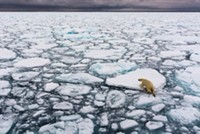Advertisement
Grab your lab coat. Let's get started
Welcome!
Welcome!
Create an account below to get 6 C&EN articles per month, receive newsletters and more - all free.
It seems this is your first time logging in online. Please enter the following information to continue.
As an ACS member you automatically get access to this site. All we need is few more details to create your reading experience.
Not you? Sign in with a different account.
Not you? Sign in with a different account.
ERROR 1
ERROR 1
ERROR 2
ERROR 2
ERROR 2
ERROR 2
ERROR 2
Password and Confirm password must match.
If you have an ACS member number, please enter it here so we can link this account to your membership. (optional)
ERROR 2
ACS values your privacy. By submitting your information, you are gaining access to C&EN and subscribing to our weekly newsletter. We use the information you provide to make your reading experience better, and we will never sell your data to third party members.
Environment
PCB Check-Up In Northern Europe
Persistent Pollutants: The chemicals' decline unaffected six years after the Stockholm Convention
by Valerie Brown
August 10, 2010

Persistent organic pollutants (POPs) can hang around in the environment for decades and accumulate in humans and animals, causing liver cancer and problems with the nervous, endocrine, and immune systems. An international treaty, the Stockholm Convention, banned production of the so-called "Dirty Dozen" POPs, including polychlorinated biphenyls (PCBs). Now a new study in the U.K. and Norway reports that although PCB levels continue to drop, the international ban has had little influence on them since going into effect in 2004 (Environ. Sci. Technol., DOI: 10.1021/es101009x).
People first started synthesizing PCBs in the 1930s for use in electrical equipment as an insulator and coolant, but scientists soon realized that they were toxic to humans.
In 1994, a team of British and Norwegian researchers established a series of land-based air sampling stations along a stretch of Northern Europe from southern England to northern Norway to monitor atmospheric POPs, including PCBs. The stations employ passive air samplers, which absorb airborne organic pollutants with semi-permeable membrane devices. At two-year intervals, the researchers analyze what the devices have collected using gas chromatography/mass spectrometry.
In the current study, Kevin C. Jones, associate director for research at the Environment Center at Lancaster University in the U.K., and colleagues report on data collected by 11 of the sampling stations from 2004 to 2008 and assess how PCB levels changed after the Stockholm Convention's ratification.
During that time, PCBs' lifetime in the atmosphere declined at a rate of about 50% every 8 years. But PCB levels had been dropping at a similar rate before the convention went into effect. So, the researchers concluded that the POP ban "appears to have had no discernible effect" on PCB levels.
Instead, the scientists think that voluntary efforts, including the cessation of most PCB production in 1993, triggered the decline long before countries ratified the convention. But, Jones says, other POPs banned by the convention may show significant drops in the future.
Tom Harner, an air quality research scientist for Environment Canada, agrees, adding that the Stockholm Convention's success can not be judged based on one chemical alone. More sampling station data on other pollutants and from other regions will help, he says, because "each chemical listed under the convention will respond differently and has a different history."




Join the conversation
Contact the reporter
Submit a Letter to the Editor for publication
Engage with us on Twitter